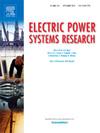Droop-based power routers for enhanced resilience in networked grids
IF 3.3
3区 工程技术
Q2 ENGINEERING, ELECTRICAL & ELECTRONIC
引用次数: 0
Abstract
The design and operation of the current power system are characterized by the integration of distributed energy resources and the evolving dynamics of modern electrical grids. Recent studies have explored the design of a novel concept for a fully controllable network: the Power Router Grid (PRG). This innovative grid concept uses power electronics devices to fully control the system’s power flows. These power electronic assets are commonly referred to as Power Routers (PRs). While the conceptual grid offers numerous advantages, its operation depends on the specific functionality of the converters, which may not always be guaranteed. This can result in reduced resilience during system contingencies or device failures.
In this context, this article proposes a new control design option for the PRG by introducing an adjustable droop regulator approach to manage the internal DC bus energy of PRs, enhancing the functionality of PRG designs. The flexibility of the system is expected to be improved by developing a mode of operation for the PRG based on the energy of the PR node. Additionally, the proposed strategy is formulated to reduce energy dispatch errors caused by the droop action during steady-state operation while enhancing system resilience, without compromising the tracking capabilities of PR devices. The proposed approach has been validated through dynamic simulations and tested in representative scenarios with varying operating conditions and contingencies. The results demonstrate the PRG’s ability to continue operating even with the loss of a PR in the power flow path, highlighting its potential to enhance system resilience.
求助全文
约1分钟内获得全文
求助全文
来源期刊

Electric Power Systems Research
工程技术-工程:电子与电气
CiteScore
7.50
自引率
17.90%
发文量
963
审稿时长
3.8 months
期刊介绍:
Electric Power Systems Research is an international medium for the publication of original papers concerned with the generation, transmission, distribution and utilization of electrical energy. The journal aims at presenting important results of work in this field, whether in the form of applied research, development of new procedures or components, orginal application of existing knowledge or new designapproaches. The scope of Electric Power Systems Research is broad, encompassing all aspects of electric power systems. The following list of topics is not intended to be exhaustive, but rather to indicate topics that fall within the journal purview.
• Generation techniques ranging from advances in conventional electromechanical methods, through nuclear power generation, to renewable energy generation.
• Transmission, spanning the broad area from UHV (ac and dc) to network operation and protection, line routing and design.
• Substation work: equipment design, protection and control systems.
• Distribution techniques, equipment development, and smart grids.
• The utilization area from energy efficiency to distributed load levelling techniques.
• Systems studies including control techniques, planning, optimization methods, stability, security assessment and insulation coordination.
 求助内容:
求助内容: 应助结果提醒方式:
应助结果提醒方式:


